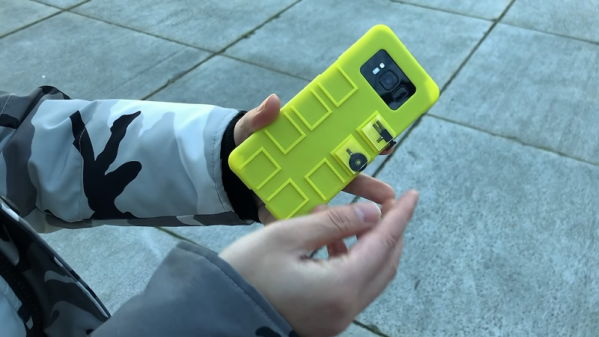The Etch A Sketch is a classic children’s toy resembling a picture frame where artwork can be made by turning two knobs attached to a stylus inside the frame. The stylus scrapes off an aluminum powder, creating the image which can then be erased by turning the frame upside down and shaking it, adding the powder back to the display. It’s completely offline and requires no batteries, but in our modern world those two things seem to be more requirements than when the Etch A Sketch was first produced in the 1960s. Enter the Tilt-A-Sketch, a modern version of the classic toy.
Rather than use aluminum powder for the display, the Tilt A Sketch replaces it with an LED matrix and removes the stylus completely. There are no knobs on this device to control the path of the LED either; a inertial measurement unit is able to sense the direction that the toy is tilted while a microcontroller uses that input to light up a series of LEDs corresponding to the direction of tilt. There are a few buttons on the side of the device as well which allow the colors displayed by the LEDs to change, and similar to the original toy the display can be reset by shaking.
The Tilt-A-Sketch was built by [devitoal] as part of an art display which allows the visitors to create their own art. Housed in a laser-cut wooden enclosure the toy does a faithful job of recreating the original. Perhaps unsurprisingly, the Etch A Sketch is a popular platform for various projects that we’ve seen before including original toys modified with robotics to create the artwork and electronic recreations that use LED displays instead in a way similar to this project.














